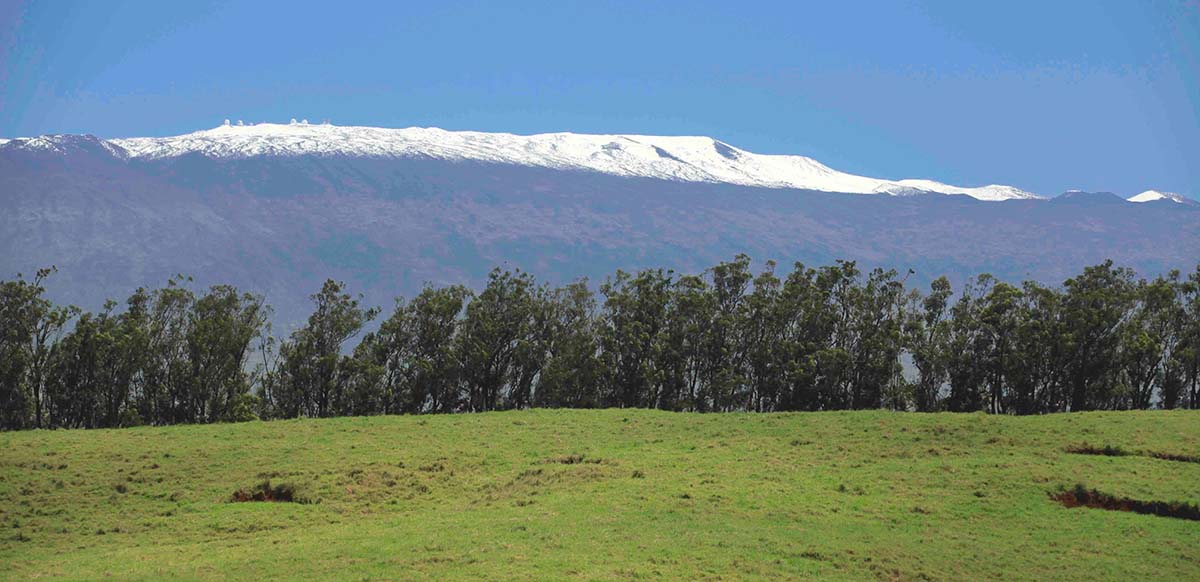I love the weather in my hometown of Waimea on Hawai‘i Island. To me, it has the best of both worlds: lush, green and cool on one side, sunny and hot on the other. The reason for this is the combination of Waimea’s unique location, at the foot of the Kohala Mountains, and the prevailing Tradewinds that blow in from the northeast, most of the year.

Big Island tradewinds
When the Tradewinds encounter the Big Island’s four major mountains—Mauna Kea, Mauna Loa, Kohala, and Hualālai—they essentially “hit the wall,” as the mountains block the airflow, effectively creating complex wind patterns all over the island and two distinct climate regions: the windward “Hilo side” and the leeward “Kona side,” northeast and southwest, respectively.
Right in the middle, between the two, is Waimea town. In fact, Waimea residents often refer to the east side of town as “the green side” and the west as “the dry side.” The Tradewinds offer a natural form of cooling ventilation, (and the wise home designer will specify that a house is situated properly on the Lot, to make the most of the wind). This natural ventilation is why most homes in Waimea don’t have air conditioning units, and when homebuyers ask, I tell them our tradewinds provide natural air conditioning – just open a couple a windows.
The Hawaiian word for wind is “makani,” and I recently learned that there are at least 58 names for the different winds of Hawai‘i Island. Four of these are referred to as Tradewinds, and two winds are specific to Waimea. They are Kīpuʻupuʻu, Waimea’s chilly wind, and Koloʻāpuʻupuʻu, wind accompanied by rain. These Koloʻāpuʻupuʻu winds give Waimea its quintessential blue skies everywhere you look, yet it’s raining and often accompanied by a rainbow.
In English, the Tradewinds, or trade winds, actually got their name from spice merchants some 4,000 years ago. At the time, camel caravans made their way from China to Europe with highly-prized spices for sale. The established west-to-east route became an established track, or “trade.”
Many years later, as spices became more common, the spice business began to wane. When the oceangoing era began in the 16th Century, it provided new access routes between the continents. The more they sailed, the more navigators learned about the fixed wind patterns that led them along their voyage. These winds became know as Tradewinds because of their route. And, as more and more companies crossed the oceans to exchange or trade goods with others, “trade” winds took on a second meaning.
During the spring and summer months, May-September, Tradewinds show their strength, with strong gusts blowing down from Kohala. In the fall and winter, August-April, we in Waimea consistently enjoy the gentle breeze that cools our homes and offices, and lifts our spirits as it lifts our hair out of place, reminding us how “lucky we live Hawaii!”



